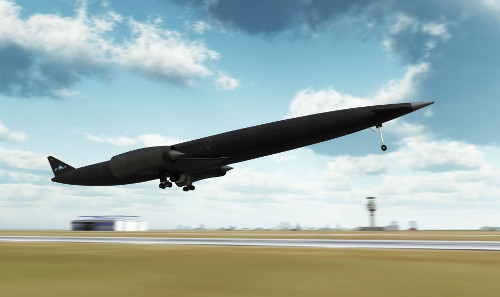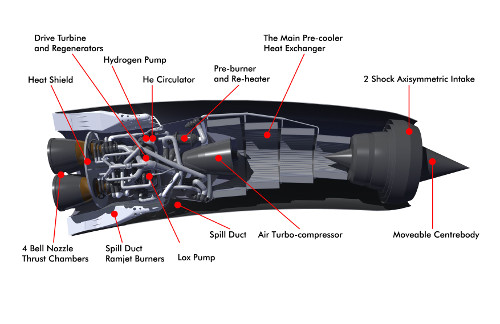6th September 2013 Toronto, Canada
SABRE, Skylon and the British aerospace revolution

Back in July, the UK government announced (amid much media fanfare) that it was investing £60 M in Reaction Engines Limited and supporting the development of the futuristic-sounding Skylon spaceplane. In this blog post, we will take a look at why this technology is significant, and why the future of aerospace is in British hands.
Space exploration and the development of off-world industries are key to our (meaning humanity’s) growth and development. We already rely heavily on satellite communications, advanced ground/atmospheric monitoring and the ability to monitor our solar system – to say nothing of multifaceted initiatives like the International Space Station. As projects like asteroid mining, crewed missions to Mars and ever-more-advanced satellites become more important, so does the ability to get things into Earth orbit efficiently and cheaply.
Currently, cargo and crew are launched on single-use rockets (the Ariane 5), the reusable space shuttles having been retired in 2011. The costs involved are immense – putting something into orbit currently costs around £15,000 per kilogram. A lot of this cost is eaten up by single-use components (rocket engines and booster stages), and by having to lift so much fuel off the ground (all of the fuel required to get from ground to orbit is stored on the rocket, making it extremely heavy).
This is where Reaction Engines Limited and the Synergistic Air-Breathing Rocket Engine (SABRE) enter the picture. The SABRE is a hybrid engine, meaning that it can operate using either air (in the atmosphere) or on-board fuel (in space). The Skylon concept is a fully reusable spaceplane that can accelerate to about Mach 5.5 (about 6,500 km/h) and 25 km altitude using atmospheric air, and then switch over to on-board oxygen for the Mach 25 needed to get into space. This reduces the size and weight of both engine and spacecraft significantly, allowing projected launch costs of only £650 per kilogram.

The key innovation in the SABRE is its precooling system. At high speeds, the air entering the engine is so hot that it would melt the components in seconds. The precooling system cools the incoming air from about 1000 °C to -150 °C in 0.01 s while avoiding ice formation, allowing much lighter materials to be used while maintaining very high speeds. If used in a conventional (atmospheric) aircraft, the journey time from London to Sydney could be reduced to about 5 hours.
With enthusiastic support of this project, the UK is keen to demonstrate that it has learned the lessons of the 1930s (when British RAF engineer Frank Whittle invented the modern jet engine) and is prepared to champion new and disruptive technologies. In terms of job creation, effect on the aerospace market and potential for revolutionising transportation (again), this is a flight that we cannot afford to miss.
nice to see somebody else has the balls to support a dream. too bad we didn’t with the avro arrow
When so much criticism has ben levelled at the Chancellor of the Exchequer, his decision to back the Sabre Skylon developments will prove to be a truly historic decision which will bring huge benefits to Britain and to mankind in its role as the launcher of choice. Even better, it can be scaled up in future versions, or the technologies can also be deployed elsewhere. I am proud of Reaction Engine’s team of dogged engineers who have achieved so much with much more to follow! (It is good to feel so proud again to be British!). Well done George Osborne, Alan Bond et al. Keep the good news going!
I do believe that Skylon has a greater potential to transform human access to space than any other current technology. The UK government is right to support this as much as it can, and ensure that at last, the Union Flag will go into space on a Skylon tail fin, in a British Space Programme that will be light years ahead of any US, Russian or Chinese competition.
Our UKSA is rightly working with the ESA, to audit the project so it meets its feasibility goals, and later, a Europe-wide consortium will be required to manufacture the beast.
Skylon breaks Akin’s 30th law of spacecraft design as a truly amazing coincidence of aesthetic form and engineering function. A reminder that British engineers working out of their garden sheds can still change the world.
A brilliant solution by British engineers and a British company. Well done British Government for backing it. Please let it run commercially to avoid another Concorde.